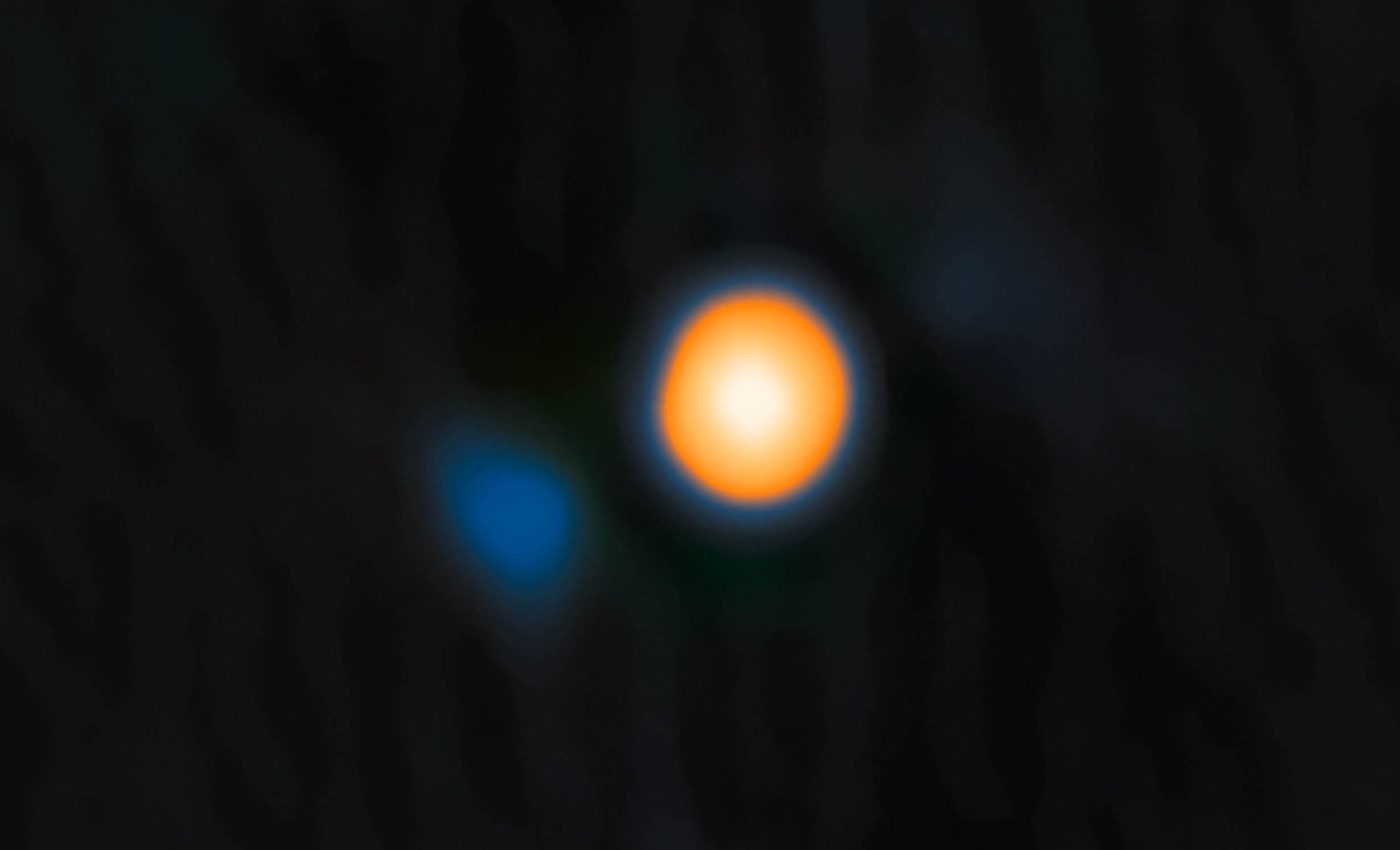
NASA confirms what astronomers suspected for a century about the star Betelgeuse
Astronomers using the Gemini North telescope in Hawai‘i have directly imaged a faint companion hugging the swollen surface of Betelgeuse, the bright red star in Orion’s shoulder.
The find ends decades of speculation sparked by Betelgeuse’s puzzling brightness swings and settles a long standing debate over whether those changes betray the pull of an unseen neighbor.
“Gemini North’s ability to obtain high angular resolutions and sharp contrasts allowed the companion of Betelgeuse to be directly detected,” said Steve B. Howell of NASA Ames Research Center, lead author of the discovery paper.
His team operates under the NSF-funded NOIRLab and credited the telescope’s speckle imaging camera, ‘Alopeke, for the breakthrough.
Betelgeuse star in the night sky
The imager named ‘Fox’ froze Earth’s atmospheric blur by firing thousands of rapid-fire exposures. It then stacked them to create a razor-sharp view of the supergiant’s face.
Each cleaned frame revealed a pinprick of light just 8 ½ astronomical units – about 790 million miles – from Betelgeuse’s photosphere. That distance is less than three times the star’s own bloated radius.
That speck is six magnitudes dimmer, about 1.5 solar masses, and likely a young, bluish-white A-type star.
Detecting such a subtle glimmer against a disc twenty one milliarcseconds wide required ‘Alopeke’s full resolving power and the 8.1 meter mirror’s light gathering muscle.
Earlier searches with Hubble and Chandra missed the target because the orbit brings the secondary in front of or behind the primary during most observing windows.
November 2027 offers the next wide separation, giving observers a clear shot to refine the companion’s spectrum.
Companion to the Betelgeuse star
Betelgeuse is the closest red supergiant to Earth and expands to about 1.1 billion miles across. Its surface roils with slow, 400-day pulsations.
Riding atop those beats is a second rhythm – a long secondary period of 5.78 years – that astronomers long blamed on giant convection cells or dust clouds.
The new analysis builds on earlier work linking century-long radial velocity curves that cycle to orbital motion and predict a low-mass companion hidden in plain sight.
Direct imaging now clinches the binary explanation. As the secondary swings behind Betelgeuse, its gravity tidally sculpts a spiral wake in the star’s extended atmosphere.
Dust condenses in that cool tail and veils part of the photosphere, trimming visible light by about seven-hundredths of a magnitude. When the fox-like starlet re-emerges half an orbit later, the cloak thins and the supergiant brightens again.
Gravitational ballet unfolds
Orbital calculations anchored by the new picture and a trove of radial velocity data show the duo circling every 2,110 days at an inclination of roughly 98 degrees, almost edge-on to our line of sight.
The mass ratio is extreme, about eighteen-to-one, so tidal forces act mainly on Betelgeuse’s convective envelope. Those torques likely spun the supergiant to a 36-year rotation – unusual but consistent with astrometric models.
The separation equals just 2.3 stellar radii, placing the companion well inside Betelgeuse’s diffuse molecular atmosphere.
Hot gas streams past the smaller star at just ten miles per second, feeding a faint trickle of accretion. This glow emits in X-rays far below Chandra’s current detection limit, but it’s a tempting target for future high-energy observatories.
Why does this matter?
Long secondary periods plague roughly one-third of luminous cool giants, and Gemini’s result hints that many could hide similar dim partners.
A 2024 study found Betelgeuse’s six-year cycle may be a model for its entire class of variable stars.
By aligning photometric minima with radial velocity peaks, researchers traced a consistent phase pattern pointing to orbiting dust modulation rather than bizarre pulsations.
The new image vaults that hypothesis from statistical inference to concrete example. It also shows how easily low-mass companions can go unnoticed.
In visible and infrared light, a K-dwarf or younger star is a million times dimmer than its bloated host, yet its gravity still shapes decades of brightness records.
Surveys of massive stars may need to include smaller companions and older stars to get a complete picture of binaries.
Spiraling toward a stellar explosion
Betelgeuse is only eight million years old, but the massive star is already burning helium in its core, racing toward a Type II supernova.
Tidal theory predicts the orbit will shrink as angular momentum transfers into the supergiant’s envelope. This would pull the companion into a denser region of gas.
Models suggest merger within ten thousand years, an eye blink in stellar terms.
If that happens, the infalling star could hurl several solar masses of hydrogen into space. This would set the stage for an unusually bright, interaction-powered supernova – brighter than a quarter Moon in Earth’s sky.
Monitoring a star’s last act
Before that finale, astronomers plan a concerted campaign. Speckle cameras, adaptive optics imagers, and millimeter interferometers will monitor the system through 2027’s wide swing and the dimming phase that follows.
X-ray and ultraviolet satellites will look for flashes from accretion streams. Meanwhile, spectrographs will track subtle changes in molecular bands that reveal dust formation.
Each dataset adds a piece to the puzzle of how giant stars lose mass and how low-mass companions survive in harsh envelopes. Together, they help reveal how the most familiar supernova precursor in the night sky might meet its end.
—–
Image: An image of Betelgeuse, the yellow-red star, and the signature of its close companion, the faint blue object. Credit: Data: NASA/JPL/NOIRlab. Visualization: NOIRLAB
The study is published in The Astrophysical Journal Letters.
—–
Like what you read? Subscribe to our newsletter for engaging articles, exclusive content, and the latest updates.
Check us out on EarthSnap, a free app brought to you by Eric Ralls and Earth.com.
—–












